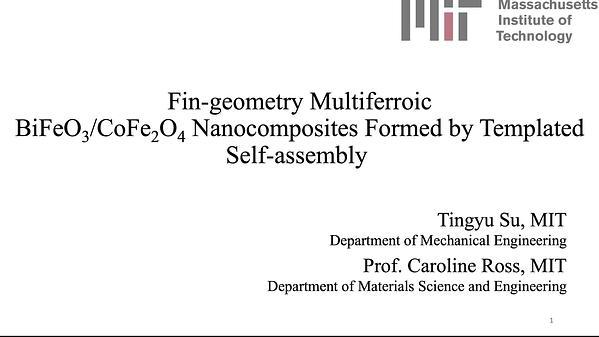Would you like to see your presentation here, made available to a global audience of researchers?
Add your own presentation or have us affordably record your next conference.
Control of the electromagnetic properties of synthetic magnetic structures at gigahertz frequencies is advantageous for the simulation and design of components for high-frequency applications, such as shielding materials in magnetic recording. In such applications, it is desirable to have a high saturation magnetization, low coercivity, high permeability, and near-zero magnetostriction. A typical material is NixFe100-x, where x ~ 80 provides near-zero magnetostriction but relatively low magnetization. Multilayer structures such as Ni80Fe20/Ni20Fe80 may benefit some static properties such as magnetization while retaining low magnetostriction 1 and therefore will extend the parameter space. We present a systematic study of the ferromagnetic resonance (FMR) of sputter-deposited thin-film NiFe bilayers of the form NixFe100-x/NiyFe100-y using VNA-FMR 2, vibrating sample magnetometry and x-ray diffraction, with the purpose of investigating the relation between dynamic magnetic and microstructure properties of such structures. Of particular interest are layer combinations involving both fcc and bcc crystal structures since studies on single films of NixFe100-x have shown dramatically increased damping of the FMR when Ni content is reduced across the transition from fcc to bcc near x ~ 40, figure 1. A result that was not to be expected from the single-layer studies was that the FMR response of certain bilayers was strong even when the bcc NiFe layer was the dominant layer in the structure, figure 2. The possibility of incorporating the best properties of both layers in this way has significance for achieving an optimized material design.
References:
1 C.B. Hill. “Manipulation and Magnetostriction of NiFe Films for Advanced Reader Shielding Application”, PhD Thesis, Queen’s University Belfast (2013)
2 Y. Ding, T. J. Klemmer and T. M. Crawford, J. Appl. Phys. Vol. 96, p.2969 (2004)

Fig. 1: FMR spectra of 100nm NixFe100-x single layer thin films with x varying from 10 to 50 across the fcc/bcc phase transition boundary. Note that all measurements were performed at an applied field H=253Oe.

Fig. 2: FMR spectra of Ni80Fe20(60-t nm) / Ni20Fe80(t nm) thin films with varying bcc layer thickness, t. Note that all measurements were performed at an applied field of 253Oe. Magnetization trend and structure schematic is inset.
